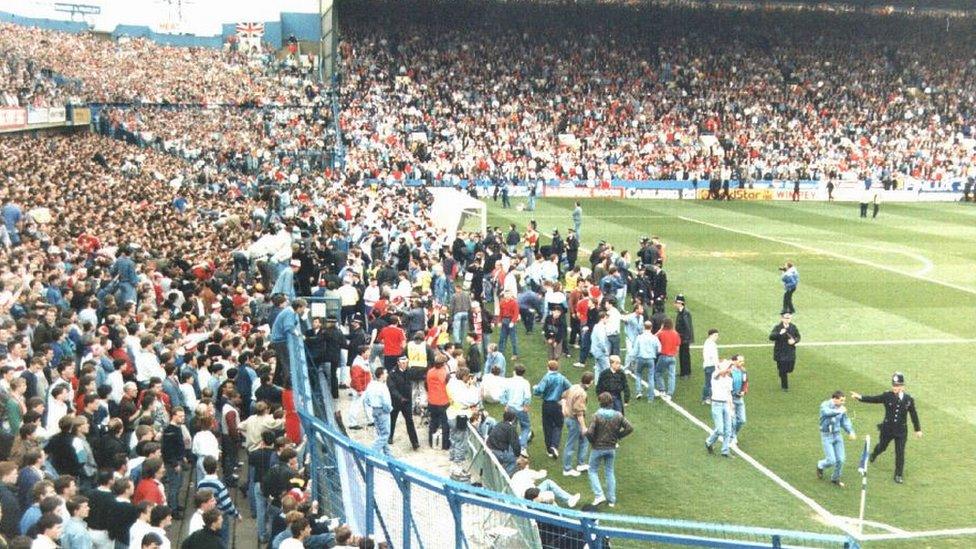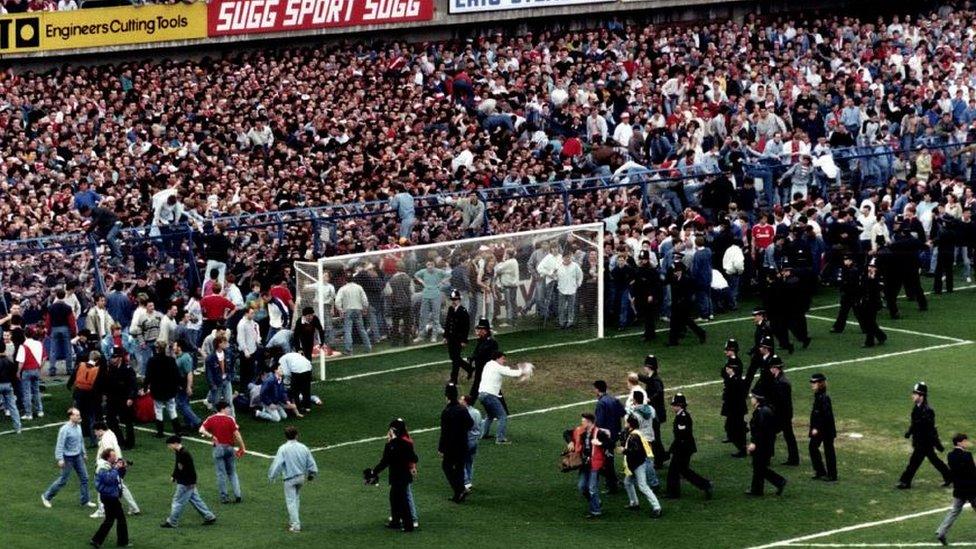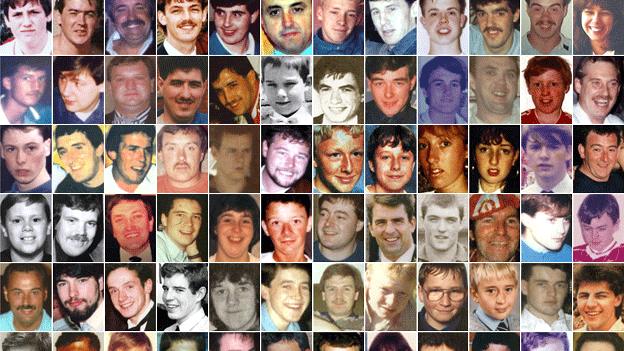Hillsborough inquests enter final phase as medical experts called
- Published

The crush happened at the Leppings Lane end of Sheffield Wednesday's stadium on 15 April 1989
The new Hillsborough inquests have started on the final phase of evidence, which aims to answer crucial questions for the families of the 96 football fans fatally hurt in the 1989 disaster.
After listening to more than 250 days of testimony from others, jurors are now hearing medical experts describe how and when each of the victims died.
The experts will also discuss whether any of them might have survived.
The coroner, Sir John Goldring, is due to begin summing up in the New Year.
This medical phase of evidence is due to last until the Christmas break.
The inquests, sitting in a purpose-built court in Warrington, Cheshire, started on 31 March 2014 and are already the longest in English legal history.
The victims were caught in a crush on the Leppings Lane terraces of the Sheffield stadium during the FA Cup semi-final between Liverpool and Nottingham Forest on 15 April 1989.

Earlier in the inquests, jurors heard evidence about the movements of the 96 on the day of the disaster
Unlike the previous inquests, which were held in Sheffield in 1990 and 1991, the coroner has not created a "15:15 BST cut-off time" after which no evidence could be considered.
He described this as a "highly controversial decision which many of the bereaved families very strongly disputed".
Prof Jack Crane and Dr Nat Cary agreed this cut-off time was "wholly wrong and arbitrary and there was no pathological basis for it".
The original coroner, Dr Stefan Popper, ruled that all the victims had either died by that time or had suffered fatal injuries.
Dr Cary, a pathologist instructed by bereaved families, has said: "There is no pathological basis.
"I thought - as a pathologist in those days - I thought, I don't know of any means of knowing when someone died."
Introducing the latest phase of evidence, Christina Lambert QC, who represents the coroner, said: "We will be calling evidence from the medical experts, and they will be giving evidence concerning cause of death, mechanism of death if possible and, again if possible, the time of death.
"They will also comment on prospects of survival of each of those who died - again, where possible."
During the previous phase, the 10 jurors heard evidence about the movements of the 96 on the day of the disaster, from leaving home to being confirmed dead.
The medical experts have seen transcripts of that evidence and had access to post-mortem reports.

Who were the 96 victims?

BBC News: Profiles of all those who died

- Published26 April 2016
